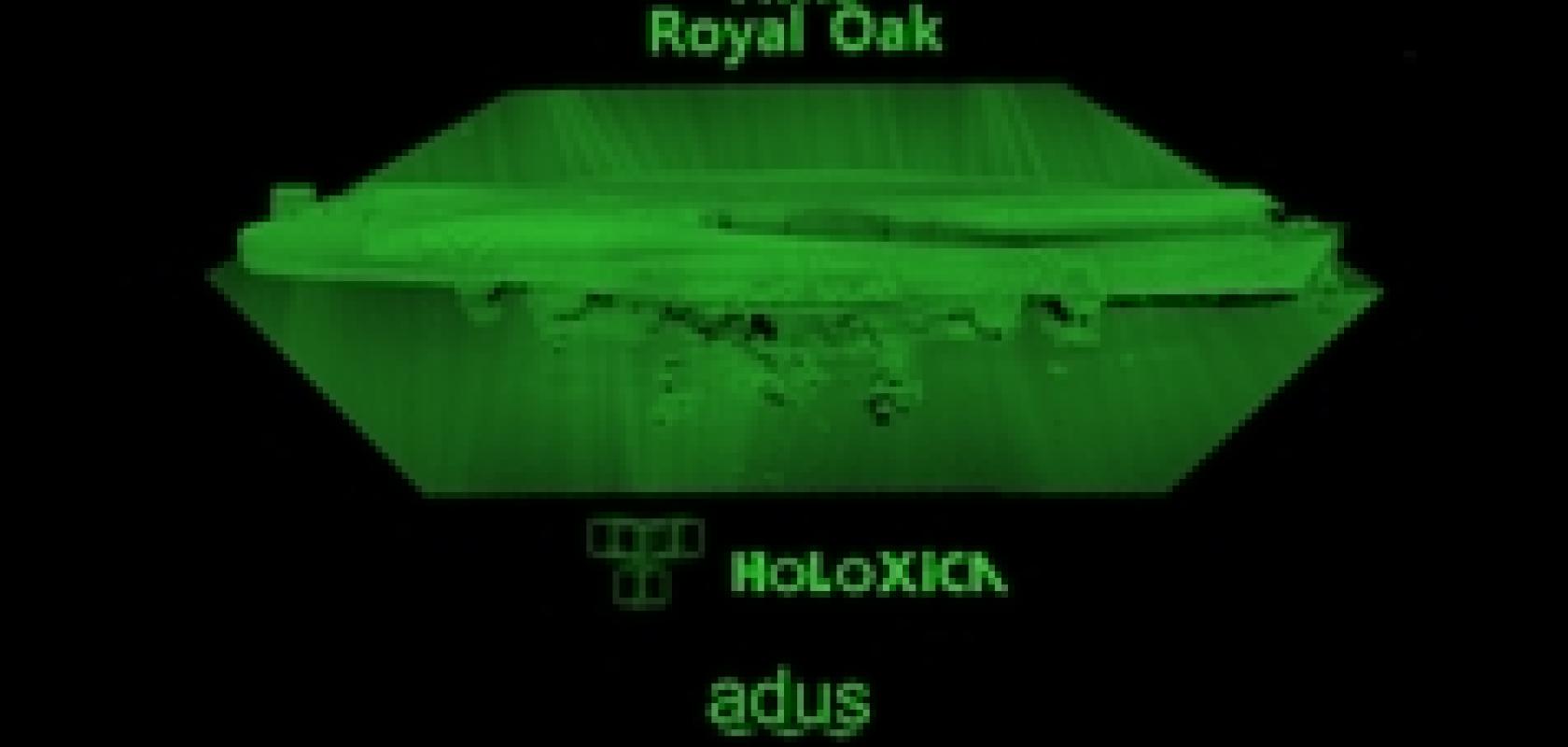A 3D hologram of HMS Royal Oak, the first battle ship sunk in the Second World War, has been generated using sonar scan information to study the condition of the wreck on the seabed.
The 3D model of the wreck and surrounding seafloor area was created by Holoxica, a 3D holographic imaging specialist, using information generated with a Reson multi-beam system by Advanced Underwater Surveys (ADUS) and visualised by the School of Media Arts and Imaging at the University of Dundee.
Instead of the traditional side scan sonar, which allows for 2D visualisation, ADUS utilises multi-beam sonar systems which provide depth data of the seabed. ADUS’ sonar data contains over 1.1 million points in three-dimensional space.
Holoxica’s representation of the current state of the HMS Royal Oak is accurate to within approximately 10cm. Building on military visualisation technology, Holoxica created this hologram as a 'lie-flat' image, which is laid horizontally and illuminated by a single spot light directly from above.
This allows for the complete visualisation through the rotation of the HMS Royal Oak hologram, which gives the viewer the ability to walk 360 degrees around it. Through this project, Holoxica can now offer a new format to customers in medicine and architecture who often have a need for lie-flat images.
The Royal Oak, a Revenge-class battleship of the British Royal Navy, was the first battleship sunk in the Second World War. She was torpedoed by a German U-47 submarine on 14 October 1939 while still anchored in Scapa Flow, the UK’s chief Naval Base throughout the two World Wars, and lost 833 of her crew.
In 2006, the Salvage and Marine Operations unit of the MoD commissioned ADUS, a company part owned by the University of St Andrews and the University of Dundee, to provide sonar images of the Royal Oak.
Martin Dean, Managing Director of ADUS, who performed the sonar survey, commented: ‘We are excited by the holographic visualisation produced by Holoxica from our wreck survey data. This is undoubtedly a major step forward in helping people to understand the condition of wrecks on the seabed, an important consideration for both cultural and environmental reasons. The Royal Oak is not only an important historic wreck, it is also slowly leaking fuel oil which could be a threat to the surrounding area.’


